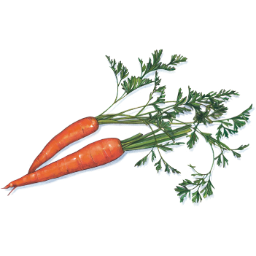Life, Liberty, and the pursuit of healthful food
by Brittany Touris –
 Few things are needed to sustain life: a heart to keep beating, lungs to keep breathing, water flowing through our bodies, and food, which fuels everything else. Because it is a basic necessity, food has rightfully earned an important place in social justice conversation and action. It might not seem like food insecurity and hunger is an issue in a country that wastes about 30-40% of the food it produces . Some people have so much they end up throwing half of what’s in their refrigerators out. Meanwhile, about 15.6 million U.S. households suffer from food insecurity, which means they may go entire days without eating. Hunger is not limited to either urban or rural areas. It affects all demographics and is truly an issue for the people. In a country with so much excess, this shouldn’t be the case. So why is it?
Few things are needed to sustain life: a heart to keep beating, lungs to keep breathing, water flowing through our bodies, and food, which fuels everything else. Because it is a basic necessity, food has rightfully earned an important place in social justice conversation and action. It might not seem like food insecurity and hunger is an issue in a country that wastes about 30-40% of the food it produces . Some people have so much they end up throwing half of what’s in their refrigerators out. Meanwhile, about 15.6 million U.S. households suffer from food insecurity, which means they may go entire days without eating. Hunger is not limited to either urban or rural areas. It affects all demographics and is truly an issue for the people. In a country with so much excess, this shouldn’t be the case. So why is it?
Food is a consumer product, just like the clothes we wear or smartphones we use. In this way, the type of food a person consumes is indicative of their social class and income level. While organic food stores show up in the wealthiest areas, food deserts form in impoverished areas. USDA defines a food desert as a “part of the country vapid of fresh fruits, vegetables, and other healthful whole foods.” Not only are healthful foods unequally available geographically, they’re also typically unaffordable to the working poor.
This unequal distribution of healthfulfoods is characteristic of our economic system where demand dictates price. With organic and healthy foods trending, the wealthy are willing to pay more, driving prices up. Some argue that the free market is a meritocracy. If one achieves more, they can reap the rewards of healthier foods. Would programs, like Supplemental Nutrition Assistance Program (commonly known as “food stamps”), then act as deterrents to achievement? Is it nothing more than a handout?
Eating a balanced, healthy diet is needed for anyone to perform to the highest of their abilities. Food is distinctly different from many other consumer goods that don’t directly impact our energy levels, physical and mental health, alertness, and more. While the price tags on some whole food items may make them seem like a luxury, they could be an important factor in determining a person’s success in school, work, or their home life. If someone starting their life out in poverty doesn’t have access to such food, do they really have an equal opportunity to succeed as someone who does?
Many people, like myself, believe that our basic rights of life, liberty, and pursuit of happiness necessitates universal access to quality foods. Unfortunately, the problem isn’t necessarily as simple as providing low-income families with the funds for food. This is where skeptics of SNAP’s effectiveness and food justice advocates may agree. Just because a person receives a SNAP allowance doesn’t mean they will have access to healthful foods. When time or transportation is limited, people sacrifice health for more convenient options. A burger from a fast food restaurant is not only substantially cheaper than a grass-fed, grade-A beef burger topped with fresh vegetables, but it’s also on the way to work and you don’t even need to get out of your car.
The most affordable and sustainable options for healthy food access are farmer’s markets, food co-ops, and community gardens. Support of these is imperative in a world that continues to prioritize making money over feeding its people. Local food is not only the freshest and healthiest, but it boosts local economies and promotes small business growth.
Food justice is not a topic that needs to become a national mainstream talking point for a difference to be made. In fact, it’s quite the opposite. Initiatives must be taken at the local level to support farmers and set up markets for them to sell their products at affordable prices. Not just in wealthy areas where the most money is to be made, but everywhere. Individuals must also be enabled to use their SNAP money at these markets. In 2011, Governor Cuomo launched an effective program to address this issue, called FreshConnect . The program provides a two-dollar FreshConnect check for every five dollars of SNAP benefits used. SNAP recipients are encouraged to use their money on fresh, locally grown foods. The markets benefit by becoming accessible to thousands more people . You can see which markets are participating by going to freshconnect.ny.gov.
This is only the beginning of addressing the problem of hunger in our country. If you would like to help this cause, think about volunteering with one of the many area food pantries, as they are always looking for volunteers. Cut down on waste in your own home and donate food when you can. And of course, buy locally.